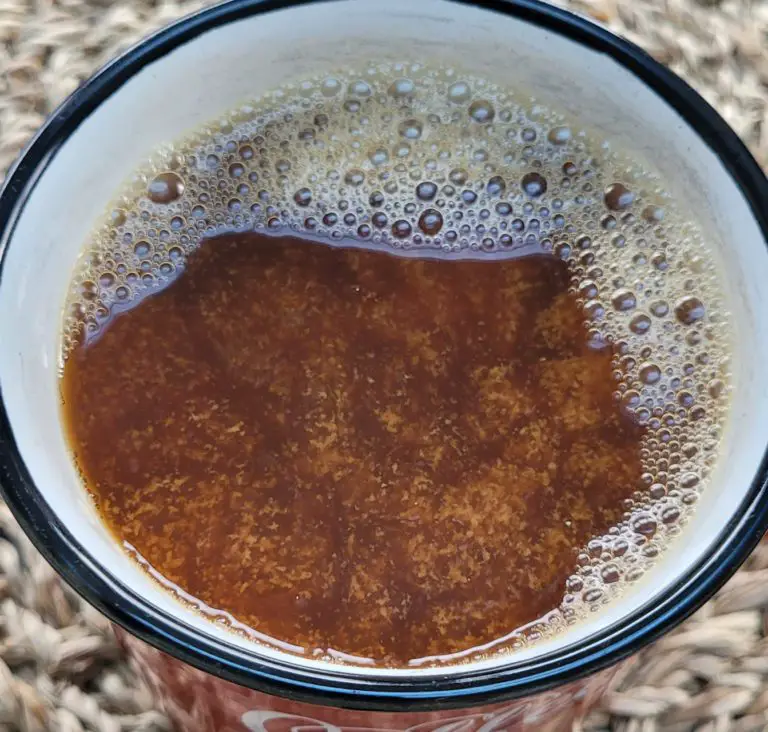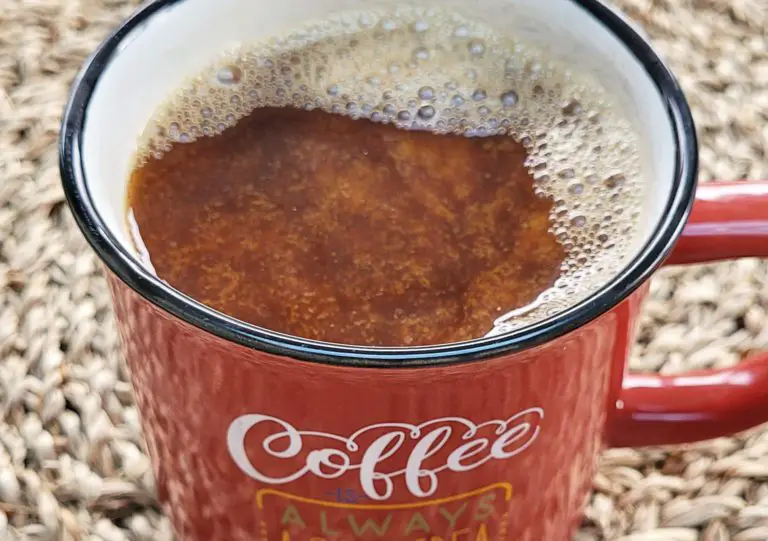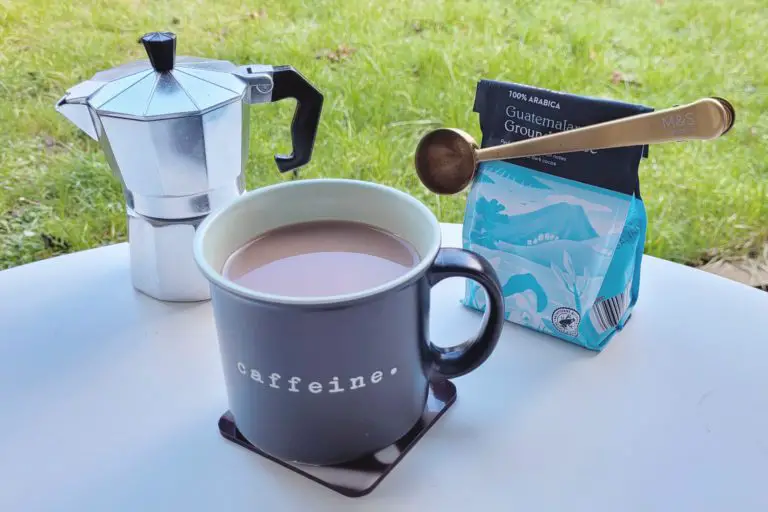Why Is Coffee Creamer Curdling in my Coffee? (Answered ✅)
Please note that some links may be affiliate links from which we may earn a commission. This is at no extra cost to you and keeps The Coffee Suite running. Thank you.
Have you made a lovely cup of hot coffee only to find that your coffee creamer is curdling or floating around your cup in bits?
Chunky, lumpy, clumpy, or whichever way you like to describe it, more often that not also referred to as ‘feathering’. This does not mean that the product has gone rancid. Feathering is simply unappealing to the eye but is perfectly safe to consume.
It may look a little like this:

Doesn’t look very appetizing though does it?!
So, why IS my coffee creamer curdling? Well, a study found that the brewing method made no difference when it came to whether or not a coffee creamer became clumpy. So, with that in mind, let’s look at other reasons and work on eliminating them one by one.
1. Expiry date
The very first thing to check is that your coffee creamer is still in date. Creamers usually last around 6 months from the time they are opened and exposed to air.
Exceeding the best before date is one of the main reasons coffee creamers can curdle, although most creamers can last quite a while beyond their best before dates, unlike ‘Use By’ dates. So if the product is in date, try looking at the acidity levels in your cup of Joe.
2. Acidity
Coffee creamers are typically free from dairy however they do use a by-product of dairy, which is usually casein. Most coffee creamers also contain high amounts of sugar. Therefore, due to how the coffee creamer reacts when it is added to the coffee (the casein and sugar in the creamer) it can create clumpy coffee creamer.
However, by putting coffee creamer into your cup first and then adding coffee, it may prevent the creamer from clumping due to the altered reaction.
Another thing to try would be to use a less acidic coffee. You could try one or both of the following:
- Dark roast coffees are less acidic than lighter roasts. The heat during roasting causes chemical changes within the beans that results in chlorogenic acids being broken down. This chemical reaction is amplified in darker roasts due to the extended length of time the beans are exposed to heat.
- Try a low acidic coffee. Coffee beans grown in certain areas such as Central and South America as well as Sumatra are naturally lower in acidity due to their growing conditions. Lifeboost coffee is proven to be 27.7% lower in acidity than the majority of coffees sold in stores so might be worth a try.

3. Water temperature
The addition of boiling hot water to cool or cold coffee creamer can cause the milk proteins in the creamer to stick together forming lumps. Let your hot water cool slightly, about 60 to 90 seconds is recommended, before adding to your coffee. Not only will you not end up with burned coffee, but your coffee creamer should remain smooth and creamy.
4. Creamer temperature
Going hand in hand with water/coffee temperature is the temperature of the coffee creamer. Creamer that is kept in the fridge may cause the creamer particles to separate or curdle if it is not brought to room temperature or warmed sufficiently beforehand. This will result in a less drastic temperature change preventing curdling.
(If you don’t already have one, I absolutely love my electric milk frother that also heats the milk at the same time. This is one way I overcame my clumpy creamer problem and to be honest, who doesn’t love frothy coffee!)
Related article:
5. Water quality
Are you using filtered water for your coffee? If your tap water is very hard, in other words it contains large amounts of calcium and magnesium, then this could inadvertently affect the way coffee creamer reacts when added to the water. Usually hard water leaves white deposits in your kettle and makes your hair dry and brittle because it leaves a film on the surface of the hair that blocks out moisturizing hair conditioners.
The best way to get around this is to purchase a faucet water filter that fits directly onto your kitchen faucet or a countertop water filtration system. Both will remove impurities and contaminants from your tap water and not only will it be healthier for you, but you will notice a huge difference in taste too.
6. Type of coffee creamer
Certain dairy free creamers tend to clump when added to coffee. Whether you’re vegan or have a dairy allergy, try Califia Oat Barista Blend. Dairy free creamers such as this are fortified with calcium and calcium is a known acidity regulator.
No lumpy, clumpy bits floating around your coffee again!
Coffee creamer FAQ's
Can coffee creamer curdle?
Coffee creamers can curdle especially when out of date or if left out and exposed to warm temperatures for an extended period of time. However, most often, if a dairy creamer is within the expiry date and still clumps in your coffee then it may just be feathering. This does not mean that the coffee creamer is ‘off’, but simply that you may need to try some of the suggestions mentioned above.
Is curdled coffee creamer safe?
Generally speaking, curdled coffee creamer that is out of date shouldn’t be harmful if you only drink a very small amount. However it may cause certain issues, particularly in sensitive individuals. These could include diarrhoea, bloating and even nausea so it might best be avoided altogether.
If the coffee creamer has been kept cool and is within date, it may just be a case of feathering. Following the steps above will help prevent this problem.

How do you keep almond milk from curdling in coffee? How do you keep almond milk from separating?
This is the exact problem I found myself having when using almond milk in coffee. After experimenting, I found that heating up the almond milk and then adding coffee, stopped the milk from curdling or feathering.
Is it safe to drink almond milk that’s curdled in coffee?
Yes, it’s perfectly safe as long as the almond milk is within it’s expiry date and has been kept cool and in the fridge since opening. It may not look appealing but try heating up the milk a little first before adding coffee and see if that helps. It certainly worked for me.
So there you have it!
Let us know which, if any have worked for you in preventing your coffee creamer from curdling.
Similarly, if you’ve tried something that has worked that isn’t listed above, let us know too!
You May Also Like

Are Coffee Stains Permanent? (PS. It’s good news!)
February 5, 2021
Coffee Makes My Stomach Hurt – 4 Ways to Remedy it
November 15, 2022


